Would you like to learn how to install OTRS on a computer running Ubuntu Linux on the Amazon AWS cloud? In this tutorial, we are going to show you how to create a new account at Amazon AWS, how to create an Ubuntu virtual machine instance, and how to perform the OTRS installation on a new virtual machine on the Amazon EC2 cloud.
• Ubuntu 20
• OTRS 6.0.29
OTRS - Related Tutorial:
On this page, we offer quick access to a list of tutorials related to OTRS.
Tutorial - How to Create a Key Pair
To access a Linux Virtual Machine on AWS, first, you need to create a private Key.
Open your browser, access the Amazon AWS website and enter your login information.
After a successful login, you will be sent to the AWS Dashboard.
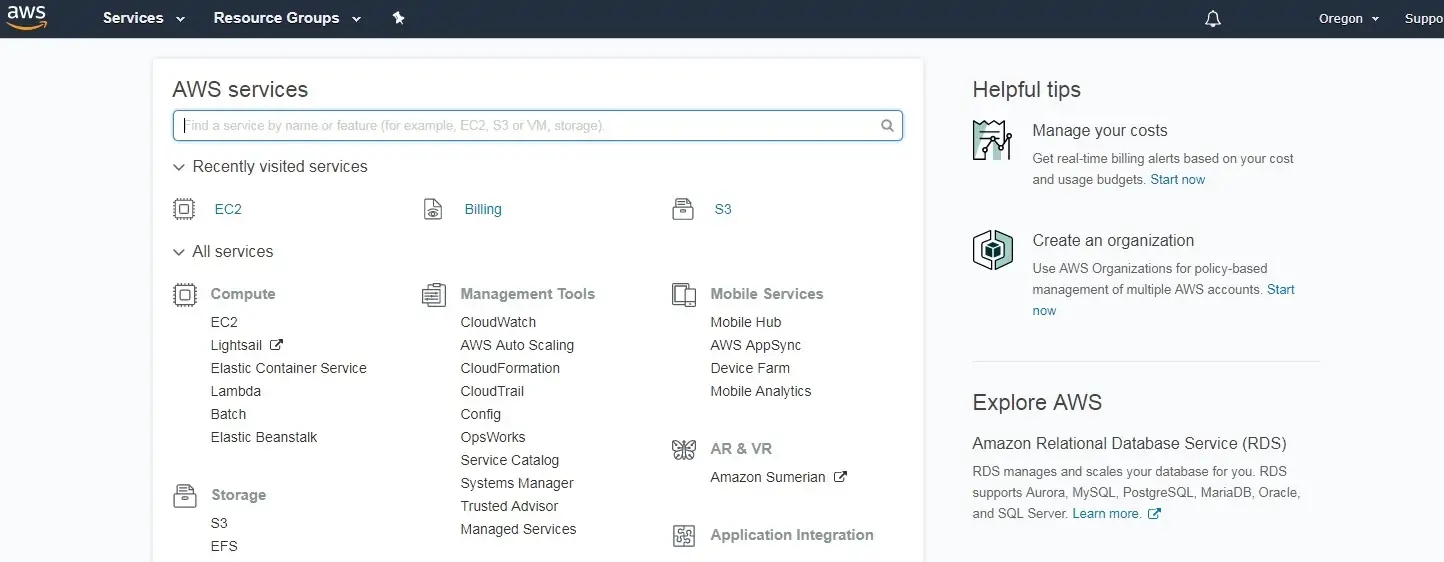
Access the COMPUTE menu and select the EC2 option.
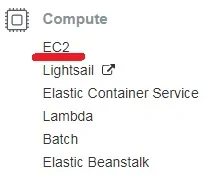
On the EC2 Dashboard, access the Network & Security menu and click on the Key Pairs option.
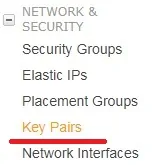
On the Key Pairs screen, click on the Create Key Pair button.
You will have to enter a name to the new Key Pair.
You will have to save locally your private key.
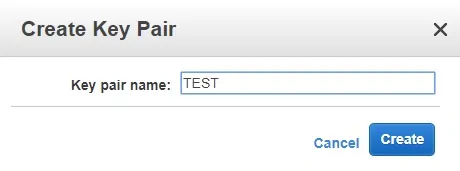
In our example, we created a key pair named TEST.
In our example, we saved a file named TEST.PEM.
Tutorial - How to Create an AWS EC2 Ubuntu
On the EC2 Dashboard, access the Instances menu and click on the Instances option.

On the EC2 Instance screen, click on the Launch Instance button.

Now, it is time to select the desired Operational system image.
On the list presented, locate and select the Ubuntu Linux image.

As the second step, you will have to select the type of virtual machine that will run the Ubuntu Linux.
Basically, you will select the number of processors and the amount of RAM that you want.

If you do not want to specify the amount of hard disk available to this virtual machine, click on the Review and Launch button.
If you want to specify the amount of hard disk available to this virtual machine, click on the Configure instance detail button.
On the summary screen, click on the Launch button.

Select the Key pair authorized to connect to the new virtual machine and click on the Launch Instances.
In our example, the key pair named TEST was selected.

On the EC2 Dashboard, access the Instances menu and click on the Instances option.
As you can see a new virtual machine was created.

In our example, the virtual machine got the Dynamic IP address: 34.217.14.140
Tutorial - How to Access an AWS Ubuntu
To access the Linux virtual machine you will have to download the following software:
• Putty
• PuttyGen
First, we need to convert the private key from the PEM format to the PPK format.
Open the PuttyGen software, access the Conversions menu and select the Import key.
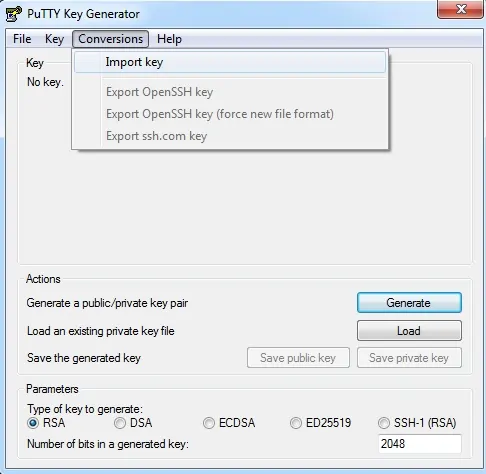
After importing the PEM file, you need to set a password to protect your private key.
Click on the Save private key button to generate a file with the PPK extension.
In our example, a file named TEST.PPK was created.
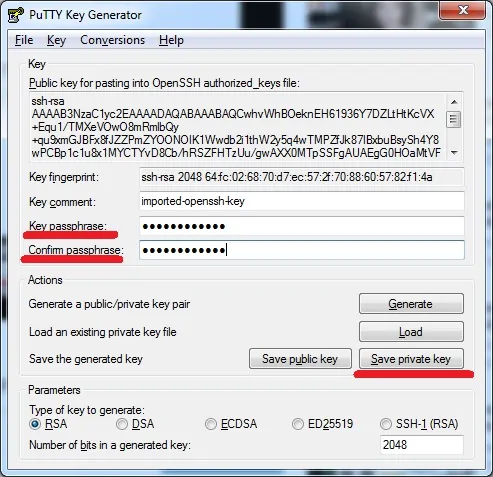
Open the Putty software, select the SSH option and enter the username ubuntu@ followed by the IP address of the AWS virtual machine.
In our example, we used ubuntu@34.217.14.140.

Access the SSH authentication tab, click on the Browse button, locate the PPK file and click on the Open button.
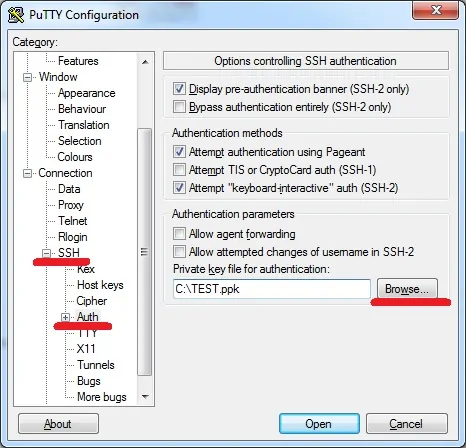
An SSH connection will be started with your Ubuntu virtual machine.
Use the following command to become the root user on the Ubuntu virtual machine.
You have successfully created an Ubuntu virtual Machine on Amazon AWS.
Tutorial OTRS - Installation on Ubuntu Linux
Install the list of required applications.
Install the MariaDB database service.
Create a MariaDB configuration file.
Here is the file content.
Restart the MariaDB service.
Access the MariaDB service command-line.
Create a database named OTRS.
Give the MySQL user named OTRS permission over the database named OTRS.
In our example, the password kamisma123 was set to the MySQL user named OTRS.
Install the Apache webserver with PERL support.
Enable the required Apache modules.
Restart the Apache service.
Create a user account for the ORTS system.
Download and install the OTRS application.
Verify if all the required PERL modules were installed.
Here is the command output.
Create a new OTRS configuration file.
Edit the OTRS configuration file.
Enter the database configuration.
Edit the OTRS configuration script.
Locate and enable the MySQL Configuration.
Here is the file, before our configuration.
Here is the file, after our configuration.
Set the correct file permission on the OTRS directory.
Verify the permission of the directory.
Here is the command output.
Enable the OTRS application as an Apache virtual host.
Verify if all the required modules were installed.
Restart the Apache service.
You have finished the OTRS installation.
Tutorial OTRS - Web installer
Open your browser and enter the IP address of your web server plus /otrs/installer.pl.
In our example, the following URL was entered in the Browser:
• http://200.200.200.200/otrs/installer.pl
The OTRS web installation interface should be presented.
Click on the Next button and accept the license agreement.

Select the MySQL database type.
Select the option to use an existing database.

Enter the information required to connect to the OTRS database.
• User: otrs
• Password: kamisama123
• Host: 127.0.0.1
• Database name: otrs
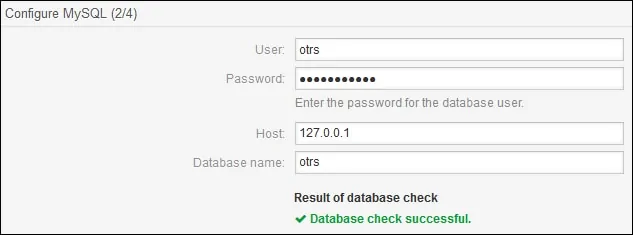
Wait for the OTRS installation to finish.

Enter the information to identify your company.
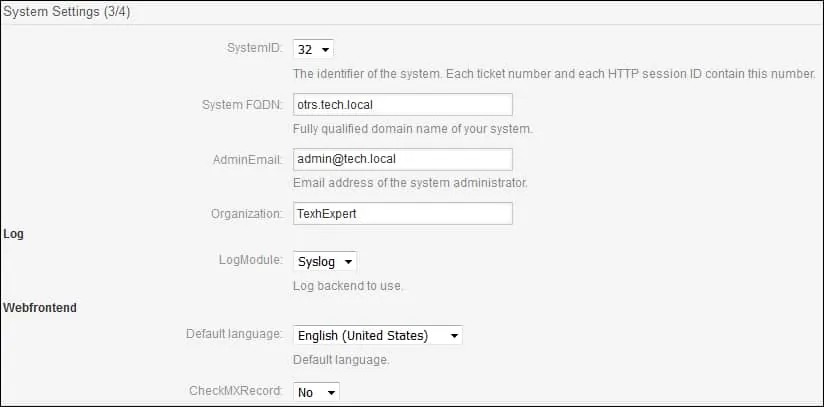
Skip the email configuration.
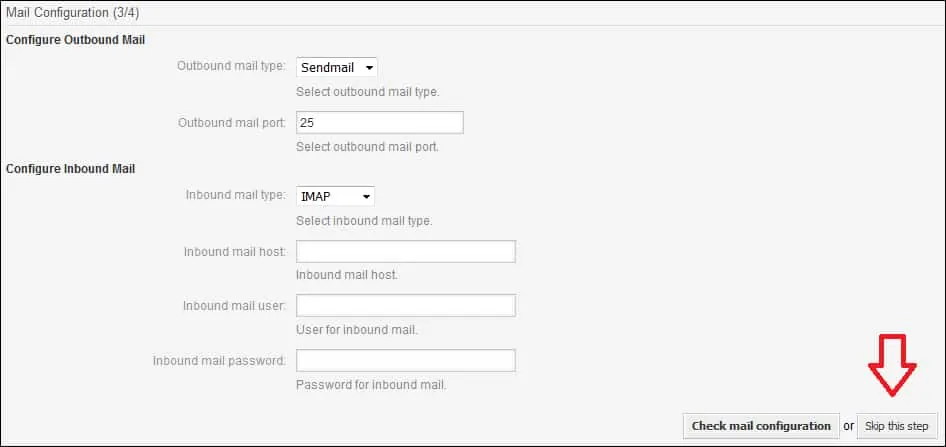
Wait for the OTRS installation to finish and take note of the password displayed.

Prepare the scheduled tasks to run.
After finishing the installation, start the OTRS service.
Congratulations! The OTRS installation was finished successfully.
Tutorial OTRS - Dashboard access
Open your browser and enter the IP address of your web server plus /otrs/.
In our example, the following URL was entered in the Browser:
• http://200.200.200.200/otrs/
The OTRS web interface should be presented.
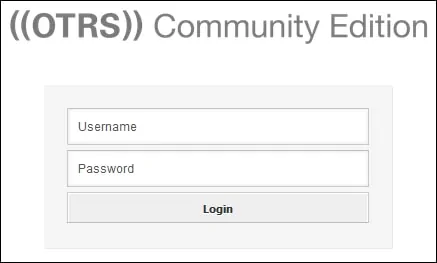
On the login screen, use the default username and the password you took note of.
• Default Username: root@localhost
• Password: yK410lwRxglOokwl
After a successful login, you will be sent to the OTRS Dashboard.
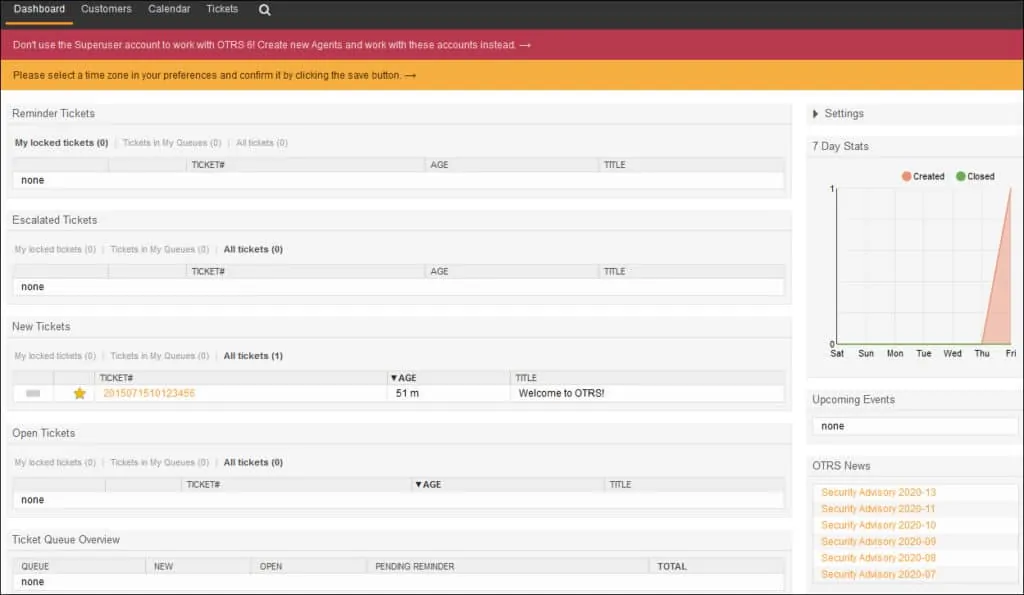
Congratulations! The OTRS installation was finished successfully.
